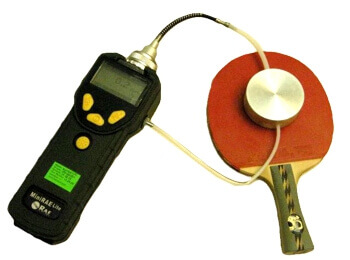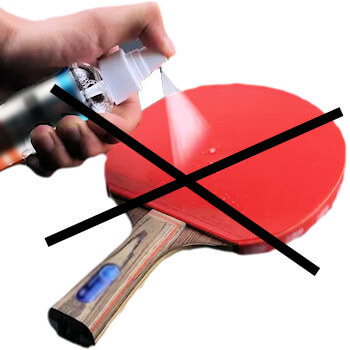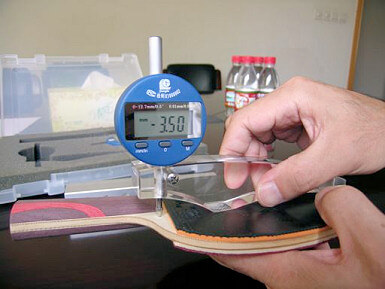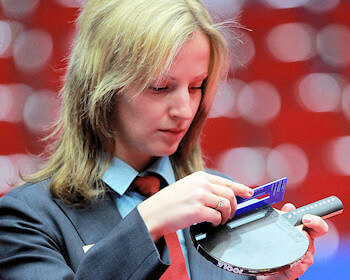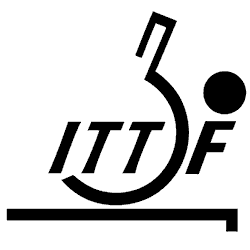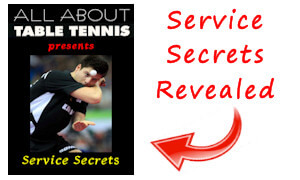You Are Here: Home » Rules of Table Tennis » Racket Control
Table Tennis Bats
Rules and Regulations
In 2008 the ITTF introduced new rules and regulations for table tennis rackets.
These included a Racket Control system to ensure compliance.
By Martin Hughes
Owner and Editor
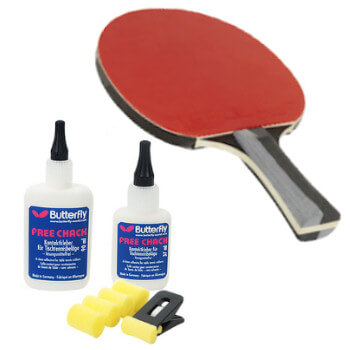
Whether you call them table tennis bats, table tennis rackets, table tennis paddles, ping pong bats, ping pong rackets or ping pong paddles ... you'll need to be aware of the rules and regulations that the International Table Tennis Federation (ITTF) introduced in 2008 relating to your table tennis racket.
These rules and regulations clarify what equipment is authorised and how it will be checked and verified.
By the way, although a racket is referred to as a paddle or a bat in some countries, the official Laws of Table Tennis call it a racket.
You can read more about the basic racket rules here.
AND...
Table tennis is the official name for this sport. Ping Pong is a trademarked name. You can read more about it here.
^ Top of page ^
Contents / Quick Links:
- Laws v Regulations
- The 2008 rules and regs
- The ITTF racket controls...
- Stringent procedures
- Advice to players
Next page:
^ Top of page ^
But first, let's take a look at...
Laws v Regulations
Before we go any further, it's worth noting the difference between the Laws (commonly referred to as the rules) of the game and the Regulations.
The Laws are the "basic" rules of the game and are mandatory for all sanctioned table tennis events, whereas the Regulations are supplementary to the Laws and are only mandatory for ITTF (International) events.
However, the Regulations can also be used for non-ITTF events and it's for the event organiser to decide whether they will use any or all of the Regulations.
So, depending on the competition you're playing in, the Regulations may or may not apply. But as a general rule, the higher the level of competition, the more likely it is that some, or all, of the Regulations will be used in addition to the basic Laws.
Let's also be clear on an important distinction...
The ITTF "authorise" equipment which can be used in sanctioned table tennis events.
They do not "ban" anything.
Equipment is either authorised or not-authorised.
Only equipment which has been authorised can be used in sanctioned table tennis events.
^ Top of page ^
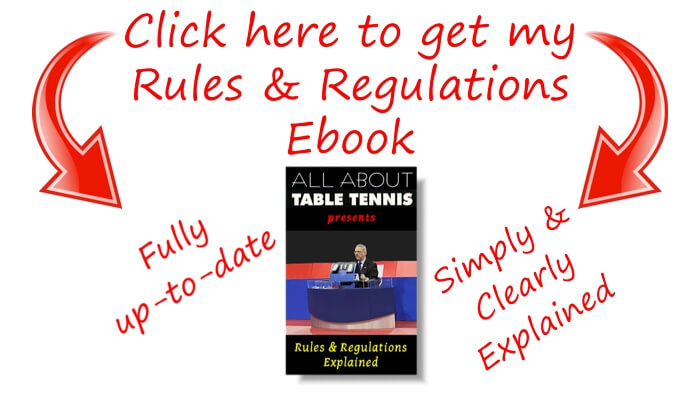
^ Top of page ^
Let's take a look at...
The 2008 rules and regulation changes
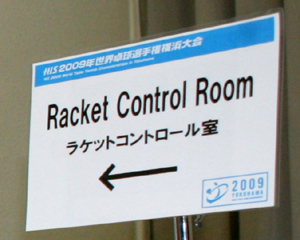 by courtesy of the ITTF
by courtesy of the ITTF
Prior to 2008 the ITTF were aware that some players were not abiding by the existing Laws and Regulations relating to the racket.
However, they were unable to accurately and precisely check rackets for compliance.
So in 2008 they introduced some new Laws (rules) and Regulations specifically about the table tennis racket.
They...
- clarified what was authorised and
- introduced a new system for testing rackets to ensure that they complied with all the new and existing rules and regulations
So let's take a look at what they did...
Firstly, they introduced a new Law (now 2.04.07) which stated...
The racket covering shall be used without any physical, chemical or other treatment.
And secondly, they introduced a new Regulation (3.02.04) which stated that...
Racket coverings can only be attached to the racket blade with adhesives that do not contain harmful volatile solvents
and that...
Racket testing will take place at ITTF events to ensure that rackets abide by all ITTF regulations
Note: "Racket Covering" is the official term for the table tennis rubber on your racket.
^ Top of page ^
So let's take a look at how the ITTF are administering these changes...
The ITTF racket controls
Event organisers are now testing rackets for compliance with these rules and regulations and maintaining detailed records of any infractions.
These include...
- Testing for use of unauthorised glue

During the 1980s, table tennis players were experimenting with different types of glue to affix their rubbers to their table tennis bats.
It was discovered that certain types of glue had the effect of increasing the speed of the table tennis rubber and this enabled a player to propel the ball much faster than usual.
This created a significant advantage for an attacking / offensive style of play.
However, the effect was only temporary, so the player needed to remove and re-glue the rubber at frequent intervals.
The problem with re-gluing is that this type of glue contains Volatile Organic Compounds (VOCs) which give off a distinctive odour.
And this odour is now considered harmful to a players health.
In addition, table tennis manufacturers had started producing "speed glue" (which also contained these harmful VOCs) to meet increasing demand.
 Mini-RAE Lite® device
Mini-RAE Lite® deviceThe ITTF therefore decided that glues containing VOCs would not be authorised, and they started testing rubbers for the presence of VOCs at ITTF events.
Since 7 October 2009, a device called a Mini-RAE Lite®, which can detect very small amounts of solvents, has been used to test rackets.
This device can detect whether racket rubbers have been affixed to the blade using glues containing harmful VOCs, contrary to ITTF Regulations.
However, as these Regulations are not used at all levels of play, it may not apply at some lower levels of play. But players should still abide by this Regulation for the sake of their own health.
^ Top of page ^
- Boosters and Tuners

Table tennis manufacturers had also started producing various liquids and sprays to rejuvinate table tennis rubbers - often referred to as boosters or tuners.
But boosters and tuners also contain VOCs ... so they're not authorised either.
To comply with Law 2.04.07, your rubber must be used exactly as it was when it was authorised by the ITTF.
This means you're not allowed to change or modify its playing characteristics by using chemical or other treatments, nor change its friction, outlook, colour, structure, surface, etc.
If you want to clean your table tennis rubber you can only use plain water.
And as cleaning of your rubbers is covered by Law 2.04.07, this means that this applies to every level of table tennis, not just higher level events.
^ Top of page ^
- 4mm thickness for sandwich rubbers
 by courtesy of the ITTF
by courtesy of the ITTFLaw (rule) 2.04.03 states that a table tennis bat with sandwich rubber must have a total thickness, including adhesive, of less than 4.05mm.
However, umpires were never able to accurately check this ... until now.
A new measurement device has now been developed and it's used to check the thickness of your table tennis rubbers.
Umpires can also perform a quick check, prior to play, by using a net measurement gauge which has a notch on one side for this purpose.
It's not as accurate, but it will indicate if further tests are required.


As the thickness of your rubber is covered by the Laws of Table Tennis, this means that this requirement applies to every level of table tennis, not just higher level events.
^ Top of page ^
- Authorisation logos on rubbers

Regulation 3.02.01 was also amended to state that your rubbers must be attached to your blade so that the ITTF logo and ITTF authorisation number, in addition to the supplier and brand names, are clearly visible near the handle of the blade so that they can be verified against the official list of authorised racket coverings.
Here's an example of the details you'll see on the lower portion of Butterfly Tenergy 05 rubbers.

However, as this Regulation is not used at all levels of play, it may not apply at some lower levels.
^ Top of page ^
Need your questions about the Rules and Regulations answered SIMPLY and CLEARLY?
Take a look at this fully up-to-date downloadable book. You'll find everything you need.
Get all the details here...
^ Top of page ^
So now there are...
Stringent racket control procedures
These rules and regulations, introduced in 2008 and refined in subsequent years, mean that racket testing now takes place at all events where the regulations are being used and the player is responsible for using a clean racket, i.e. without VOCs and with the correct rubber thickness.
So it's important that you don't add anything which is not authorised onto your racket, even if you're playing at lower level events.
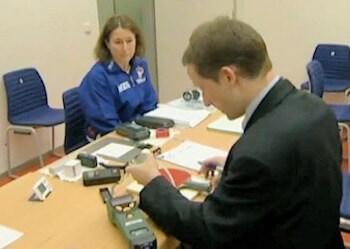
However, all players are entitled to have their rackets tested voluntarily, without any penalties, before their match.
Rackets that don't pass the racket control test before their match can't be used, but they can be replaced by a second racket - which which may be tested immediately if time permits, but if not, will be tested after their match.
Where rackets don't pass a racket control test after their match, the offending player will be liable to penalties.
In addition, this new regulation states that the ITTF will maintain a register of all racket control failures.
^ Top of page ^
So, what does this all mean for players?
Advice to players
Following the introduction of these new rules and regulations, the ITTF issued the following advice to players...
As a precaution you should take the following steps:
- Air your new rubber outside the plastic bag for at least 72 hours before gluing it to your table tennis bat
- Only use water based glue or VOC-free, Pressure Sensitive Adhesive (PSA) sheets
- Only clean your table tennis bat with water - don't use any other substances
- Do not add natural substances such as oils etc. to your rubber
- Do not stretch your rubber. You must use the rubber as it's been approved by the ITTF and as it comes from the producer
- You should use a thin layer of glue to avoid exceeding the 4mm thickness limit. Make sure the surface is flat and does not bulge.
Sometimes the rubber is too thick when it comes from the factory. It's your responsibility not to use it
- Always carry a spare table tennis bat if you can
The ITTF intends to impose the strictest penalties on those that break the rules. This includes players, coaches, National Associations and manufacturers.
So, take care of your table tennis bat and don't break the rules - you have been warned!
Need your questions about the Rules and Regulations answered SIMPLY and CLEARLY?
Take a look at this fully up-to-date downloadable book. You'll find everything you need.
Get all the details here...

^ Top of page ^
| MORE PAGES ABOUT THE RULES OF TABLE TENNIS |
|---|
For more information about the rules of table tennis, take a look at my other articles which explain the Official
Laws of Table Tennis and the additional Regulations (for higher level play) in more detail...
The Laws of Table Tennis
Regulations (for higher level play)
General
Frequently Asked Questions
|
Click here for a large selection of
table tennis equipment at Megaspin *

Click here for a large selection of
table tennis equipment at Bribar *
^ Top of page ^
You Are Here: Home » Rules of Table Tennis » Racket Control

